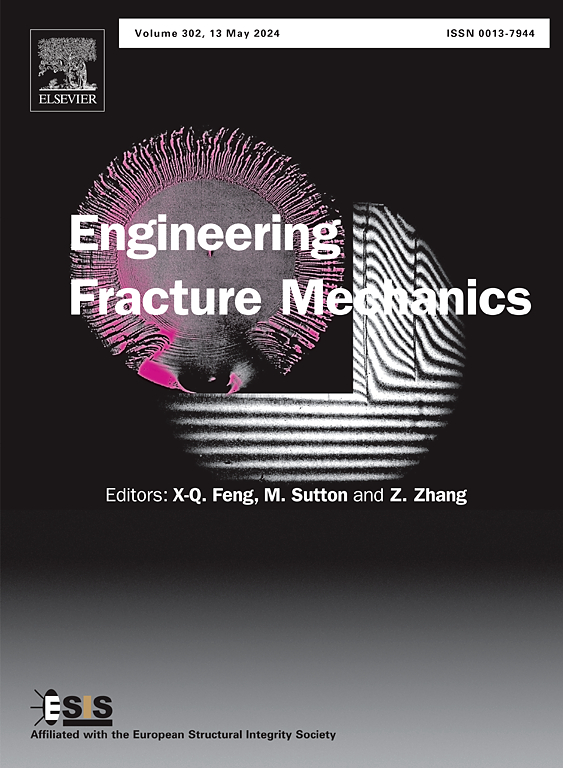氧化铝板在高速侵彻下的锥裂与破碎:实验与模型
IF 5.3
2区 工程技术
Q1 MECHANICS
引用次数: 0
摘要
采用弹道冲击实验和数值模拟的方法研究了氧化铝陶瓷板的弹道损伤和破碎。使用一级和二级气枪以及高速摄影,以274-1040米秒- 1的速度用钢质球形弹丸(直径5毫米)进行了弹道冲击试验。利用光学成像、三维激光扫描和扫描电镜对死后目标进行表征。随着冲击速度的增加,陶瓷靶的损伤模式依次为径向裂纹(无锥)、锥裂、锥裂和锥裂。随着冲击速度的增加,锥形弹孔(或陶瓷锥)的直径、体积和面角增大,而陶瓷锥的高度减小。在冲击区,冲击压缩损伤和冲击拉伸损伤分别产生颗粒状和粗粒状碎片,碎片尺寸分布服从幂律。采用光滑颗粒流体力学和有限元方法(SPH-FEM)以及Johnson-Cook和Johnson-Holmquist本构模型进行了数值弹道模拟。SPH-FEM固定耦合模型可以捕捉陶瓷靶材的破坏机理和破碎特征,包括陶瓷锥的三维形貌演变。锥形裂纹的角度偏转是由于弹体和靶体自由表面的应力波相互作用,改变了裂纹尖端的应力状态,从而改变了裂纹的扩展方向。本文章由计算机程序翻译,如有差异,请以英文原文为准。
Cone cracking and fragmentation of alumina plates under high-speed penetration: Experiments and modeling
Ballistic damage and fragmentation of alumina ceramic plates are investigated with ballistic impact experiments and numerical simulations. Ballistic impact tests are conducted with steel spherical projectiles (5 mm diameter) at 274–1040 m s−1 using one- and two-stage gas guns along with high-speed photography. The postmortem targets are characterized with optical imaging, three-dimensional (3D) laser scanning and scanning electron microscopy. As the impact velocity increases, ceramic targets show damage modes as radial cracks (without cones), cone cracks, cone spallation, and cone fragmentation in sequence. The diameter, volume, and surface angles of the conical bullet holes (or ceramic cones) increase, while the height of ceramic cone decreases, with the increase of impact velocity. In the impact region, the shock compression-induc ed and tension-induced damage produce granular and coarse fragments, respectively, with the fragment size distribution following a power law. Numerical ballistic simulations are performed using the smooth particle hydrodynamics and finite element methods (SPH-FEM) along with the Johnson–Cook and Johnson–Holmquist constitutive models. The SPH-FEM fixed coupling model can capture the failure mechanisms and fragmentation characteristics of ceramic targets, including the 3D morphology evolution of ceramic cones. The angle deflection of the cone cracks is attributed to the stress wave interactions from the projectile and target free surfaces, altering the stress state at the crack tip and thus crack propagation direction.
求助全文
通过发布文献求助,成功后即可免费获取论文全文。
去求助
来源期刊
CiteScore
8.70
自引率
13.00%
发文量
606
审稿时长
74 days
期刊介绍:
EFM covers a broad range of topics in fracture mechanics to be of interest and use to both researchers and practitioners. Contributions are welcome which address the fracture behavior of conventional engineering material systems as well as newly emerging material systems. Contributions on developments in the areas of mechanics and materials science strongly related to fracture mechanics are also welcome. Papers on fatigue are welcome if they treat the fatigue process using the methods of fracture mechanics.

 求助内容:
求助内容: 应助结果提醒方式:
应助结果提醒方式:


